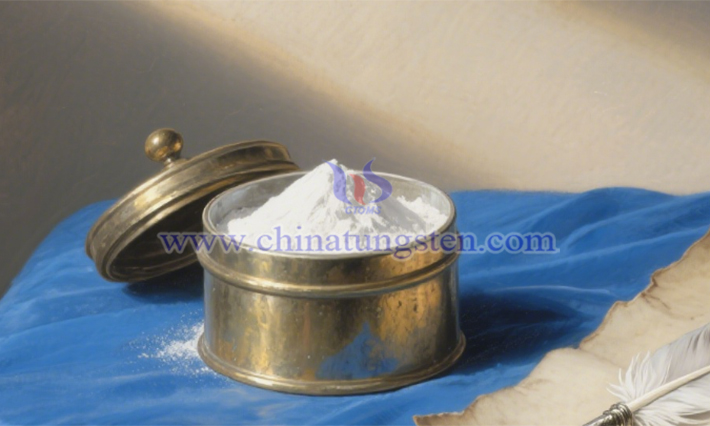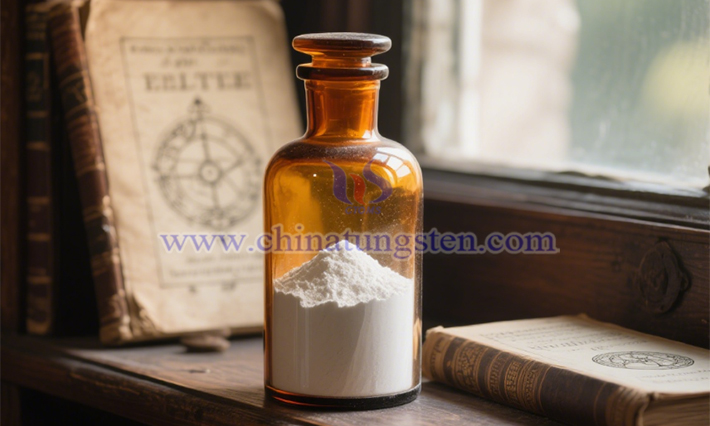What Is Magnesium Tungstate?
- Details
- Category: Tungsten Information
- Published on Thursday, 03 July 2025 11:35
Within the family of inorganic functional materials, magnesium tungstate (MgWO₄) stands out as a representative alkaline earth metal tungstate, leveraging its unique crystal structure and perse properties to deliver significant value in optoelectronic displays, catalytic degradation, and functional ceramics. This compound, formed by magnesium ions (Mg²⁺) and tungstate ions [(WO₄)²⁻], inherits the stability of alkaline earth metals while gaining rich optical and electrical responses from the tungsten-oxygen framework, serving as a bridge between traditional chemistry and emerging optoelectronic technologies.

Magnesium tungstate is an inorganic compound with a monoclinic or tetragonal crystal system, formed by the combination of Mg²⁺ and tungstate ions, with the chemical formula MgWO₄ and a molecular weight of 272.14. From the perspective of crystal field theory, the tetrahedral configuration of the tungstate ion interacts with the six-coordinate environment of Mg²⁺, forming a stable [Mg(WO₄)] lattice. This structure imparts a density of 6.89 g/mL, insolubility in water and alcohol but solubility in acids, while providing a structural foundation for optical transitions and catalytic activity.
Magnesium tungstate is a white powder with a rich array of functional properties: Optical Properties: As a self-activated fluorescent material, the WO₄²⁻ groups in its lattice undergo charge transfer transitions under UV excitation, producing characteristic fluorescence emission. Catalytic Performance: The redox properties of the tungstate ion, combined with the Lewis acidity of Mg²⁺, enable high catalytic activity for the degradation of organic pollutants. Chemical Stability: Its low solubility and high-temperature resistance in neutral environments make it suitable for applications requiring chemical inertness, such as ceramic coatings and paint fillers.

The versatility of magnesium tungstate has led to its adoption across multiple industrial fields: As a red phosphor, its self-activated luminescence is utilized in CRT displays and LED packaging materials, particularly in tricolor phosphor systems, where it pairs with blue and green phosphors to achieve a wide color gamut. In water treatment, MgWO₄’s ultrasonic catalytic system achieves over 90% efficiency in degrading dye wastewater, offering a cost-effective solution for organic pollutant management. In functional ceramics, the addition of MgWO₄ improves sintering density, making it suitable for multilayer ceramic capacitors and other electronic components.
The functional applications of magnesium tungstate are closely tied to its microstructure, with unique preparation processes tailored to specific uses:
Preparation Process for Magnesium Tungstate Red Phosphor: Add a magnesium nitrate solution and a rare earth ion compound solution (e.g., Eu³⁺) to a sodium tungstate solution in proportion, adjust the pH to a weak alkaline level to facilitate co-precipitation of MgWO₄ with rare earth ions, forming a white turbid liquid. After vacuum filtration, the sample is calcined, with crystal growth and defect control optimizing fluorescence performance.
Preparation Process for Magnesium Tungstate Catalytic Material: Mix MgWO₄ with the organic dye methyl orange II in a specific ratio within an ethanol-water solution, stirring under light-proof conditions to allow dye molecules to adsorb onto the catalyst surface via hydrogen bonding. Transfer the mixture to an ultrasonic device, where the local high-temperature and high-pressure environment from ultrasonic cavitation activates valence band electrons in MgWO₄, generating electron-hole pairs that induce the formation of ・OH radicals, enabling the catalytic degradation of methyl orange II.
- Chinatungsten Online: www.chinatungsten.com
- CTIA GROUP LTD: en.ctia.group
- Tungsten News & Price: www.ctia.com.cn
- Molybdenum News & Price: news.molybdenum.com.cn
- Tel.: 86 592 5129696; Email: sales@chinatungsten.com